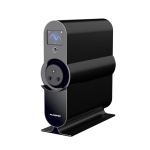Online Photochemical Derivatization Enables Comprehensive Mass Spectrometric Analysis of Unsaturated Phospholipid Isomers
Mass spectrometry-based lipidomics is a primary tool for the structural analysis of lipids, but effectively localizing carbon–carbon double bonds (C=C) in unsaturated lipids to distinguish C=C location isomers remains challenging. This study develops a large-scale lipid analysis platform by coupling online C=C derivatization through the Paternò-Büchi reaction with liquid chromatography-tandem mass spectrometry. This platform provides rich information on lipid C=C location isomers, revealing C=C locations for over 200 unsaturated glycerophospholipids in bovine liver, including 55 groups of C=C location isomers. By analyzing tissue samples from breast cancer patients and plasma samples from type 2 diabetes patients, the study finds that the ratios of C=C isomers are much less affected by interpersonal variations than their individual abundances, suggesting that isomer ratios may be used for the discovery of lipid biomarkers.
- This study introduces a lipid analysis platform integrating the Paternò–Büchi (PB) C=C derivatization with hydrophilic interaction chromatography-tandem mass spectrometry (HILIC-LC-MS/MS) for comprehensive analysis of unsaturated glycerophospholipids at the C=C location level.
- The platform enables large-scale profiling of unsaturated glycerophospholipids, revealing >200 unsaturated species in polar lipid extract from bovine liver, including 55 groups of C=C location isomers (48 not previously annotated in LIPID MAPS).
- Analysis of breast cancer tissues and type 2 diabetes (T2D) plasma samples demonstrated that C=C location isomer composition changes could serve for biomarker discovery and they are more robust indicators of pathological states than individual lipid abundances with significantly reduced inter-individual variability.
Nat Commun. 2019 Feb 19;10(1):918. (IF: 14.7)


